Portugal has become one of the top places for property investors in Europe. The warm weather, relaxed pace of life, and scenic views attract people from around the world. The country is also seen as a safe place to live and invest. Many buyers now look for homes that can give them regular rental income rather than just long-term value.
Rental properties are in high demand due to the growing number of people moving to Portugal. According to AIMA the foreign population in Portugal reach 1,6 million people with residence permits now live in the country. Many of them prefer to rent instead of buy, especially in the first few years. This change has created strong rental demand in cities, towns, and coastal regions.
At the same time, tourism continues to support the short-term rental market. But not all areas give the same return on investment. Some cities offer higher rental yields in Portugal due to lower home prices and strong rental demand. In this guide, we break down the best buy-to-let areas, using simple numbers and real data to help you make smart choices.
What is Rental Yield and Why It Matters
Rental yield is a simple way to measure how much income a property can bring. It shows the yearly return you earn by renting out a home. The yield is shown as a percentage. It’s calculated by dividing the yearly rent by the property’s total price.
For example, if you buy a home for €200,000 and earn €12,000 in rent each year, your gross rental yield is 6%. This number helps you compare properties across different cities and towns. Some places may have expensive homes but lower rent. Others may have cheaper homes but steady rental demand, leading to better returns.
Rental yield is useful when you want to know if a property is worth your money. It also shows how fast you might recover your cost. A yield above 5% is generally seen as good. Even a 4% yield can work well in safe and well-connected areas.
When looking for rental homes in Portugal, many buyers use real estate platforms or engage with a buyer’s agent. Before buying any property, check the yield and compare it to other areas. A few extra percentage points can make a big difference in long-term income. Yield gives you a clear idea of where your money works best.

Portugal’s Nationwide Rental Yield Overview
Portugal continues to show strong results in the buy-to-let market. Rental demand is high in many cities and towns. The average property price across the country is about €2,735 per square meter. At the same time, the average rental price is around €16.3 per square meter. This gives a national rental yield of about 7.15%, which is higher than what many other European countries offer.
A yield above 7% shows that rental property in Portugal can bring solid returns. The market has remained stable over the last few years. While prices have gone up in some areas, rental demand has also increased. This balance keeps the rental yield strong. Projections for 2025 suggest the average property price will be around €2,693 per square meter, which means prices may hold steady or drop slightly.
Different regions attract different types of renters. In big cities like Lisbon and Porto, students and working professionals look for homes near schools, offices, or public transport. In tourist spots like the Algarve, most rentals are short-term. In smaller towns, you’ll find long-term renters and local families looking for affordable homes.
Each region in Portugal has its own pattern of demand, price, and rental return. Some areas have low purchase prices and strong rent, giving better yields. Others may cost more to buy but bring stable long-term tenants. Before you invest, it’s important to check the local rental yield. It helps you understand where your money will grow best.
Top Buy-to-Let Regions in Portugal with High Yields
Lisbon
Lisbon is the most visited and active city in Portugal. It is the capital, the business hub, and a favorite stop for travelers. In fact, VisaGuide.World named Lisbon the best European capital to visit in 2024, thanks to its rich history, food scene, and weather. This constant flow of people keeps rental demand high.
The city center is pricey, but renters are willing to pay more to stay near the action. The average yield in Lisbon is around 5.74%, which is strong for such a major city. While places like Baixa and Chiado cost more, areas like Amadora or Alenquer are more affordable and still in demand.
Lisbon’s rental market is also supported by remote workers and students. The metro system makes it easy to live slightly outside and still get downtown fast. Investors like the steady income here, even if home prices are on the higher side. If you’re looking for a balance between safety, demand, and long-term value, Lisbon remains one of the best buy-to-let areas in the country.
- Selling Asking Price: €4,174/m²
- Rental Asking Price: €20.00/m²
- Expected Gross Yield: 5,74%
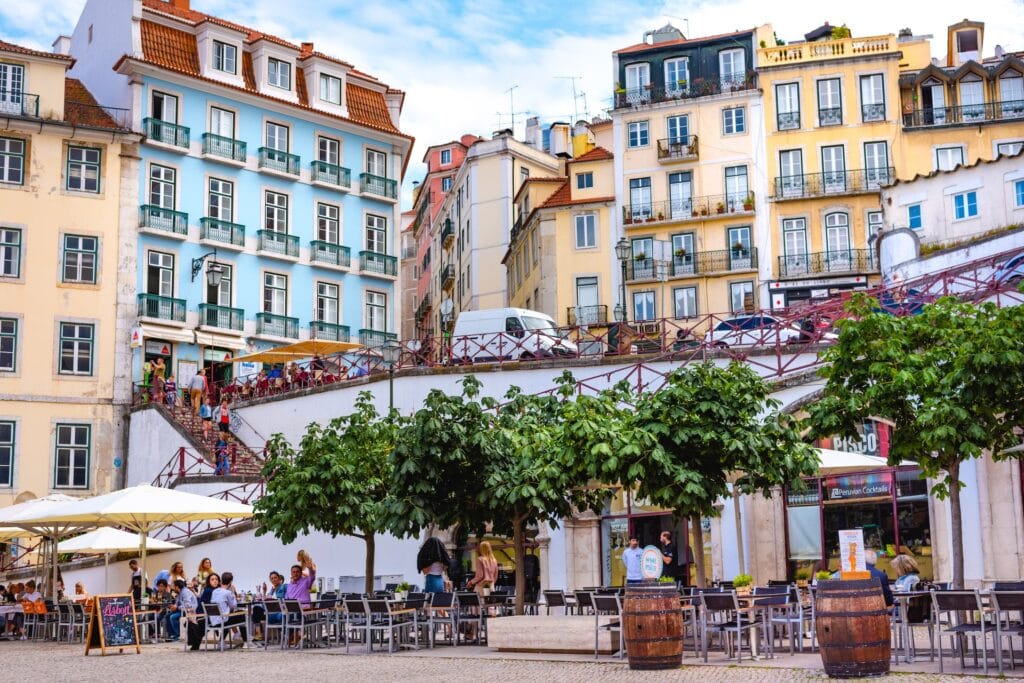
Porto
Porto is Portugal’s second-largest city and one of the fastest-growing areas for rentals. It is known for its wine cellars, colorful houses, and relaxed lifestyle. Porto has also gained attention in the luxury housing market. Knight Frank’s 2023 Wealth Report ranked Porto among the top 10 fastest-growing luxury real estate markets in the world.
One big advantage is price. Homes in Porto are much cheaper than those in Lisbon. But rent is still strong, which helps lift the rental yield to nearly 6.7%. That makes it a great value for new investors.
The city has a mix of tourists, students, and working professionals. Popular districts like Cedofeita or Bonfim attract young renters. Nearby areas like Gondomar give good yields too, at lower entry costs.
Porto’s transport links and cultural appeal keep it busy all year. The city also supports long-term rentals better than short-term ones, thanks to fewer legal limits. For those looking to get started in property with a solid return, Porto is one of the smartest picks in Portugal right now.
- Selling Asking Price: €2,764/m²
- Rental Asking Price: €15.40/m²
- Expected Gross Yield: 6.9%
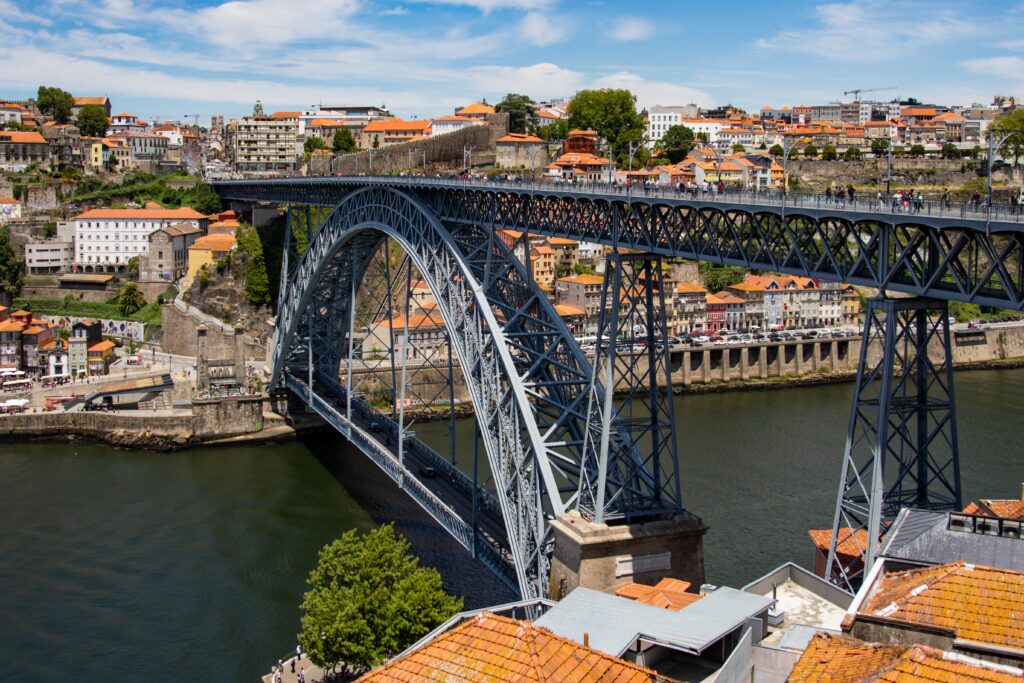
Algarve
The Algarve is the top tourist region in Portugal. It is famous for golden beaches, golf resorts, and calm weather. Many foreigners buy second homes here or stay for holidays. One hotspot is Vilamoura, home to one of Europe’s top marinas. Euro Weekly News reported that Vilamoura was voted the Best International Marina for the seventh time in eight years.
Rental homes in Algarve are often used for short stays. The rental income is high in summer but drops in winter. This gives Algarve a yield of about 4.99%. While lower than cities like Porto, this still makes sense if managed well.
Recent transport updates may increase demand too. In May 2025, United Airlines will start direct flights from Faro to Newark, New York, making it easier for Americans to visit or invest.
Popular towns include Albufeira, Lagos, and Faro. If you plan to rent to holidaymakers, these places work well. But for better yield, you must manage bookings carefully. Algarve is ideal for people who want a mix of personal use and seasonal rental income.
- Selling Asking Price: €3,513/m²
- Rental Asking Price: €14.60/m²
- Expected Gross Yield: 4.99%
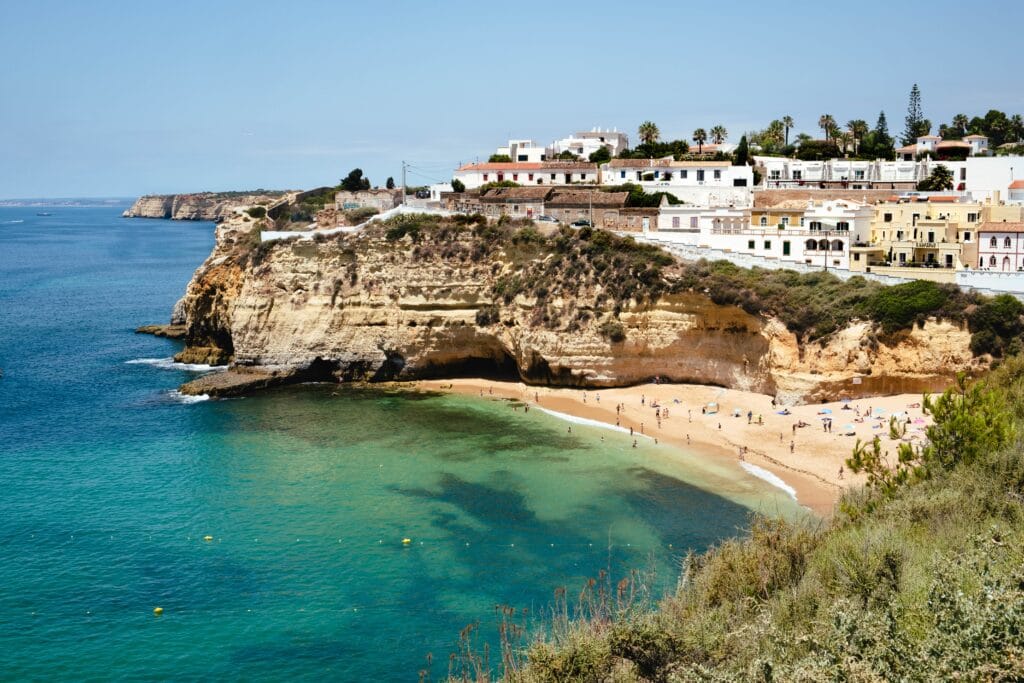
Cascais
Cascais is a popular coastal town just outside Lisbon. It is well known for its clean beaches, calm streets, and high quality of life. Many expats, diplomats, and business people live here. It’s close to the city but offers more space and peace.
Homes in Cascais are some of the most expensive in Portugal. Still, rental demand remains strong. People who rent here often stay long-term. They may work in Lisbon but want to live near the sea. While the rental income is steady, the high property prices mean lower yields around 4.67%.
If you buy in areas like Carcavelos, São Domingos de Rana, or Estoril, you’ll find a mix of families and professionals. These areas also have good schools and parks, which attract tenants. The train ride to Lisbon takes about 30 minutes, making it perfect for daily travel.
Cascais works well for investors who want a secure property in a high-end area. You may not get the highest return in terms of yield, but you get peace of mind and long-term demand. It’s also a great place if you plan to live in the home part of the year.
- Selling Asking Price: €5,191/m²
- Rental Asking: €20.20/m²
- Expected Yield: 4.67%
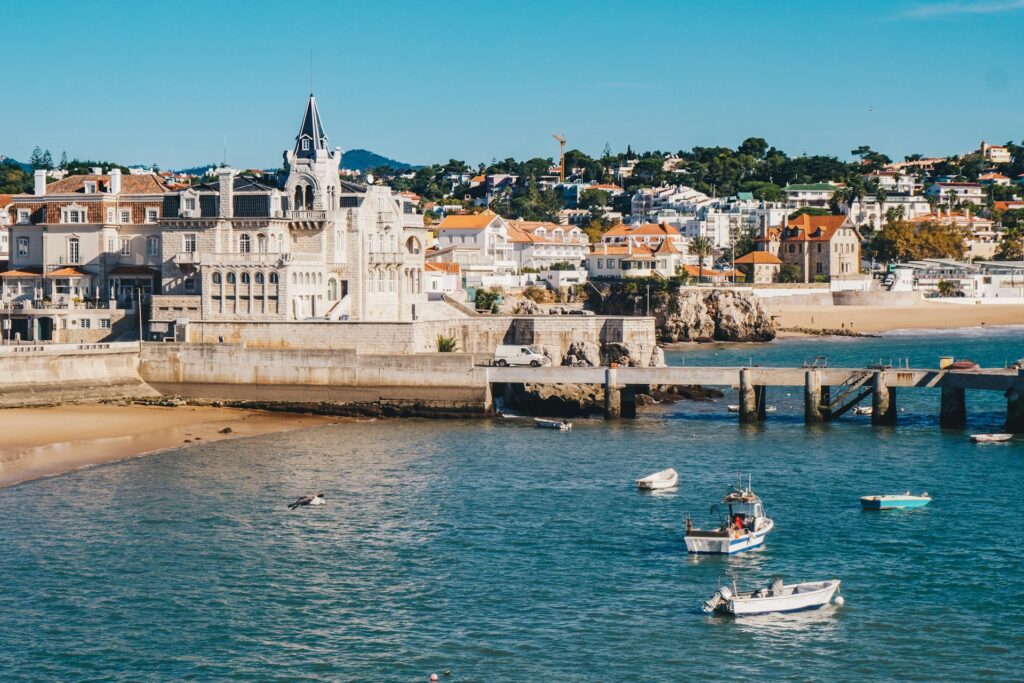
Sintra
Sintra is a green, historic town just northwest of Lisbon. It’s known for its hills, palaces, and cooler weather. The area is a UNESCO World Heritage site and attracts many visitors during the year. Yet, unlike other tourist towns, Sintra also has a strong local rental market.
Homes in Sintra are cheaper than those in nearby Cascais or Lisbon. That makes it a good place to invest, especially for those on a budget. The rent here is stable, and the yield is healthy around 6.38%.
Neighborhoods like Agualva, Mira-Sintra, and São Marcos are well connected by train and bus. They attract long-term renters, including workers who commute to Lisbon. Schools and basic services are easy to access, which makes them great for families.
Many people buy in Sintra to enjoy a slower pace of life. You’ll find a good balance between price, income, and tenant demand. For buy-to-let investors who want regular rental income and room for value growth, Sintra is one of the best options close to the capital.
- Selling Asking Price: €2,560/m²
- Rental Asking : €13.60/m²
- Expected Gross Yield: 6.38%

Setúbal
Setúbal is a growing city south of Lisbon. It is located near the sea and the Sado River. In recent years, it has seen more people moving in, partly due to rising prices in Lisbon. Many now choose to live in Setúbal and travel into the capital for work.
Homes are still affordable here. At the same time, rents are going up, which makes the yield strong at 6.05%. In some nearby towns like Barreiro, returns are even better, reaching over 6.9%.
Setúbal has a working port, local shops, and beaches. You’ll also find good schools, public transport, and a strong local economy. The area feels more relaxed than Lisbon but still busy enough to support long-term rentals.
Investors like Setúbal because they can buy more for less money. And tenants like it because they can live near the coast without paying Lisbon prices. For anyone looking to start small or grow a portfolio, this city is worth serious thought. The mix of rising demand and fair prices gives it a clear edge.
- Selling Asking Price: €2,619/m²
- Rental Asking : €13.20/m²
- Expected Gross Yield: 6.05%
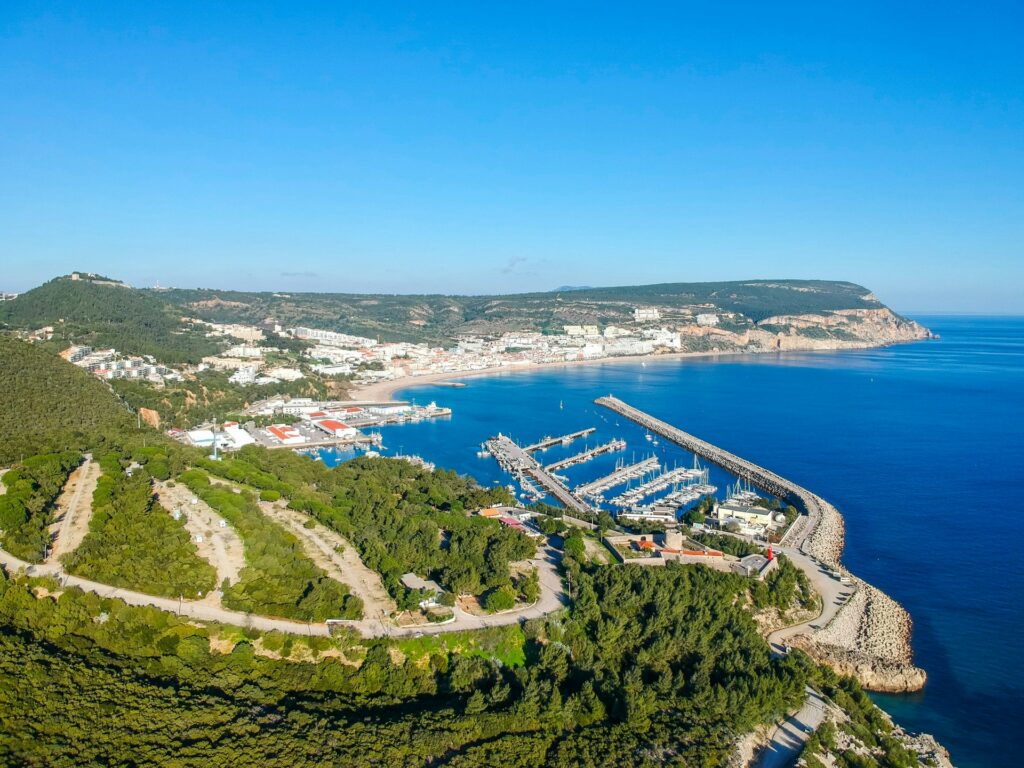
Urban vs. Rural: Which One is Better?
When looking at Buy-to-Let homes in Portugal, one big question is where to invest – city or countryside? Urban areas like Lisbon and Porto are well-known. They have high property prices, but they also have a strong rental market. People come here for jobs, schools, and lifestyle. This means there is steady demand, and less risk of long vacancies.
In cities, your Buy-to-Let income may be more stable, even if the rental yield is a bit lower. These areas are ideal if you want a reliable tenant base and don’t mind spending more on the property itself. Plus, homes in big cities are easier to sell later if you change your plans.
On the other hand, rural towns or smaller cities are much cheaper to buy into. Places like Setúbal, Sintra, or parts of the interior offer lower purchase prices. That means you can start your Buy-to-Let journey with less capital. In many cases, the rental yields in these areas are even higher than in Lisbon or Porto.
But there’s a catch that rental demand in rural zones can be weaker. Jobs and transport may be limited. So, your home could sit empty if you don’t choose wisely. It’s important to study the area before buying.
For many first-time investors, the best move is to start in a mid-sized town. These places offer a good mix of low price and decent rental demand. Whether you go urban or rural, the key is to run the numbers and check if your Buy-to-Let income covers costs.
Rules and Taxes Before Buying Property in Portugal
Before investing in a Buy-to-Let home in Portugal, it’s important to know the rules and taxes. These costs can affect your final returns, even if Rental Yields in Portugal look good on paper.
Annual Property Tax: IMI
The first tax to know is IMI, which is a yearly municipal property tax. This is based on the value of your home and the local rate. You can use this helpful IMI simulator to estimate how much tax you’ll need to pay each year. This gives you a clearer view of your long-term costs.
One-Time Purchase Tax: IMT
Next is the IMT, or property transfer tax. This is paid one time when you buy a home. It depends on the price and type of the property. The IMT calculator lets you check how much you’ll owe before making a deal. This helps you plan your full Buy-to-Let budget in advance.
Income Tax on Rental Earnings
If you earn rental income, you’ll also need to pay income tax. The rate depends on your total income and if you live in Portugal or not. Some foreign owners can choose a flat tax, which may be easier to manage. Always talk to a local tax expert before you rent your property.
Short-Term Rentals and AL Licenses
For short-term rentals, you may need an AL license (Alojamento Local). Not all cities are giving out new licenses now, especially in high-tourism zones. Make sure the area you pick allows new licenses if you plan to rent on a daily or weekly basis.
Understanding taxes is key to making smart Buy-to-Let choices. These costs can reduce your profit if you don’t plan ahead. But when managed well, they still allow for strong Rental Yields in Portugal and steady long-term income from your investment.

Why to work with us
Finding the right buy-to-let property in Portugal takes more than just scrolling through listings. It requires knowledge of the market, an eye for high-yield opportunities, and a clear understanding of rental demand in different regions. That’s where Portugal Investment Properties makes the difference.
We help investors from around the world find and purchase top rental properties across Portugal. Whether you’re looking in Lisbon, Porto, the Algarve, or smaller towns with great value, we guide you every step of the way. Our team knows where to find stable rental income and which areas are showing the best price growth.
At Portugal Investment Properties, we don’t just sell properties, we help you build a rental income strategy. From property search to closing the deal, we handle all the hard parts. You get honest advice, local insights, and access to properties you won’t find on public platforms.
Here’s what makes us different:
- Local expertise in all key regions across Portugal
- Strong network of agents, legal partners, and property managers
- Personalized advice based on your budget and rental goals
- Support with legal paperwork and residence permits, if needed
- Access to off-market listings and investment-ready units
Whether you’re a first-time investor or growing your real estate portfolio, we make it simple. We listen to your needs, analyze your goals, and help you choose homes that work for you.
Looking to Invest in Portugal?
Explore our newest listings below!
Frequently Asked Questions About best rental yields in portugal: from porto to the algarve
What is a good rental yield in Portugal?
A yield above 5% is considered good, and anything near or above 6% is very strong for most areas.
Is Lisbon still worth it for rentals?
Yes, if you choose areas with strong rental demand, stable occupancy, and the right price-to-rent ratio for returns.
Which city gives the best returns?
Porto and Setúbal currently offer some of the best rental yields in Portugal, thanks to low prices and rising demand.
Do I need a license to rent out homes?
Yes, short-term rentals require an AL license, while long-term rentals usually don’t need special permits in most regions.
Can foreigners buy property in Portugal?
Yes, foreigners can freely buy and rent property in Portugal, with no restrictions on ownership or rental activity at all.
Are taxes high on rental income?
Rental income is taxed, but non-residents may pay a flat rate. Total tax depends on income and property type.
How do I find a good rental home?
Compare prices, rental demand, location, and property conditions. Use local experts or trusted websites to make smart choices.
Should I rent short-term or long-term?
Long-term rentals offer stability and less work. Short-term can pay more but needs active management and license approval.
Is it better to buy in a city or town?
Cities are safer with steady demand. Towns offer higher yields but carry more risk if demand is low or seasonal.
Can I manage the home myself?
Yes, but local agents help with bookings, maintenance, and rent collection, saving you time and reducing daily stress.
